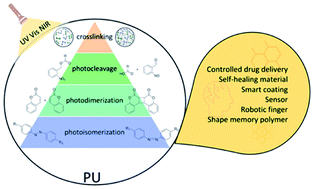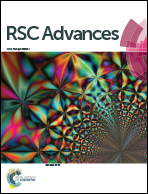Light-responsive polyurethanes: classification of light-responsive moieties, light-responsive reactions, and their applications
Abstract
Stimuli responsiveness has been an attractive feature of smart material design, wherein the chemical and physical properties of the material can be varied in response to small environmental change. Polyurethane (PU), a widely used synthetic polymer can be upgraded into a light-responsive smart polymer by introducing a light-sensitive moiety into the polymer matrix. For instance, azobenzene, spiropyran, and coumarin result in reversible light-induced reactions, while o-nitrobenzyl can result in irreversible light-induced reactions. These variations of light-stimulus properties endow PU with wide ranges of physical, mechanical, and chemical changes upon exposure to different wavelengths of light. PU responsiveness has rarely been reviewed even though it is known to be one of the most versatile polymers with diverse ranges of applications in household, automotive, electronic, construction, medical, and biomedical industries. This review focuses on the classes of light-responsive moieties used in PU systems, their synthesis, and the response mechanism of light-responsive PU-based materials, which also include dual- or multi-responsive light-responsive PU systems. The advantages and limitations of light-responsive PU are reviewed and challenges in the development of light-responsive PU are discussed.



 Please wait while we load your content...
Please wait while we load your content...